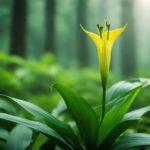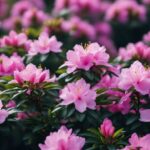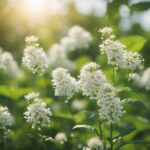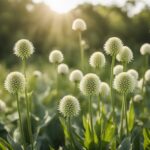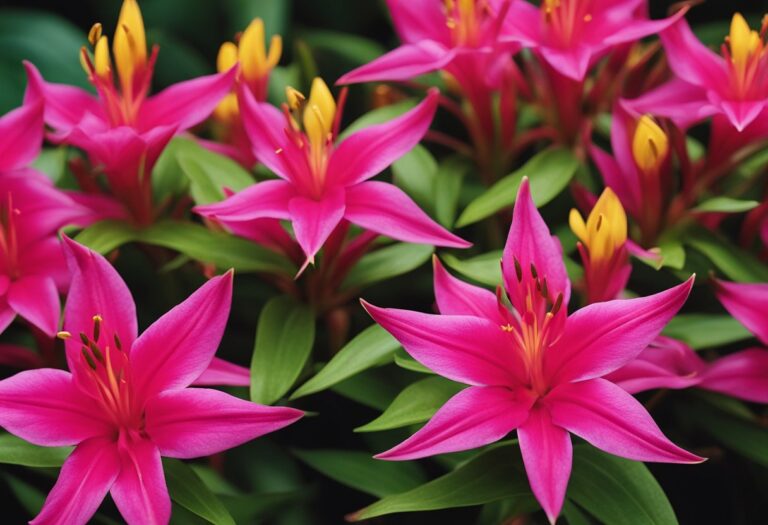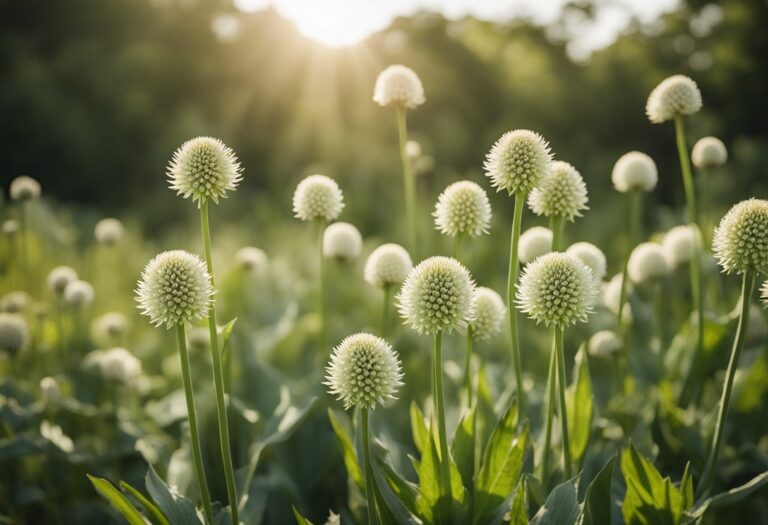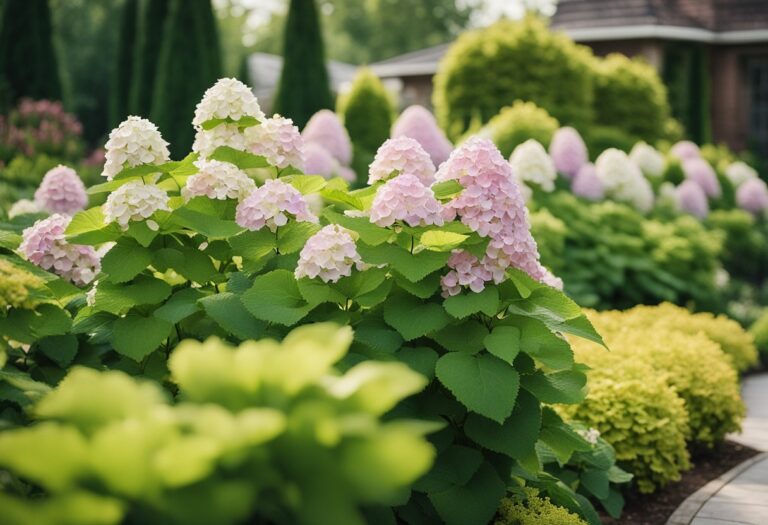Overview of Little Honey Oakleaf Hydrangea
The Little Honey Oakleaf Hydrangea (Hydrangea quercifolia ‘Little Honey’) is notable for its unique foliage and seasonal interest. This deciduous shrub presents a refreshing contrast to the traditional hydrangea with its lobed, oak-like leaves, which start as a bright yellow in spring and deepen to rich gold in the summer.
Key Features:
- Sunlight: Performs well in full sun to part shade.
- Soil Requirements: Prefers moist, fertile, and well-drained soil.
- Watering: Regular watering is essential, especially in drier conditions.
Regarding its floral display, you’ll appreciate the elongated clusters of white flowers that bloom in summer. As autumn arrives, these blossoms transform, adopting pink hues and enhancing your garden’s visual appeal.
Size and Growth:
- Height: Grows up to 3-4 feet (90-120 cm).
- Spread: Can reach 4-5 feet (120-150 cm) wide.
Maintenance for your Little Honey is minimal. It requires little pruning, and you can manage its size and shape with selective trimming. In terms of hardiness, you may need to protect it in colder zones, such as zone 5, to shield it from winter elements.
- Pruning: Limited to maintaining structure and size.
- Hardiness: May require winter protection in zones below -10 degrees Fahrenheit.
This hydrangea is easy to care for and resilient to common problems. Leaf-spotting fungal diseases are rare and generally non-threatening, ensuring your Little Honey remains a trouble-free addition to your garden.
Cultivation Requirements
The ‘Little Honey’ Oakleaf Hydrangea will thrive in appropriate conditions. Focus on its specific soil, light, water, and climate needs to ensure robust growth.

Soil Preferences
Your ‘Little Honey’ Oakleaf Hydrangea prefers fertile, well-drained soil. To suit its growth requirements, aim for a pH that is slightly acidic to neutral.
- Texture: Loamy to sandy-loam
- Fertility: Enriched with organic matter
- pH Level: 5.5 to 6.5
- Drainage: Good drainage is essential
Light Requirements
While capable of tolerating some sun, ‘Little Honey’ performs best in partial shade. If in full sun, avoid the hottest part of the day to avoid leaf scorch.
- Best Light Conditions: Dappled or part shade
Watering Schedule
Consistently moist but not soggy conditions are ideal for ‘Little Honey’. Establishing a regular watering schedule, especially during dry spells, is important.
- Frequency: Regular watering, more frequent in dry conditions
- Method: Use drip irrigation or soaker hoses to avoid wetting foliage and flowers
Climate Considerations
‘Little Honey’ is suited to areas where winter temperatures do not frequently fall below -20°F. In climates hotter than USDA Zone 8, afternoon shade helps prevent stress.
- USDA Hardiness Zones: 5 to 8
- Temperature: Not suited to extremes
Planting and Propagation
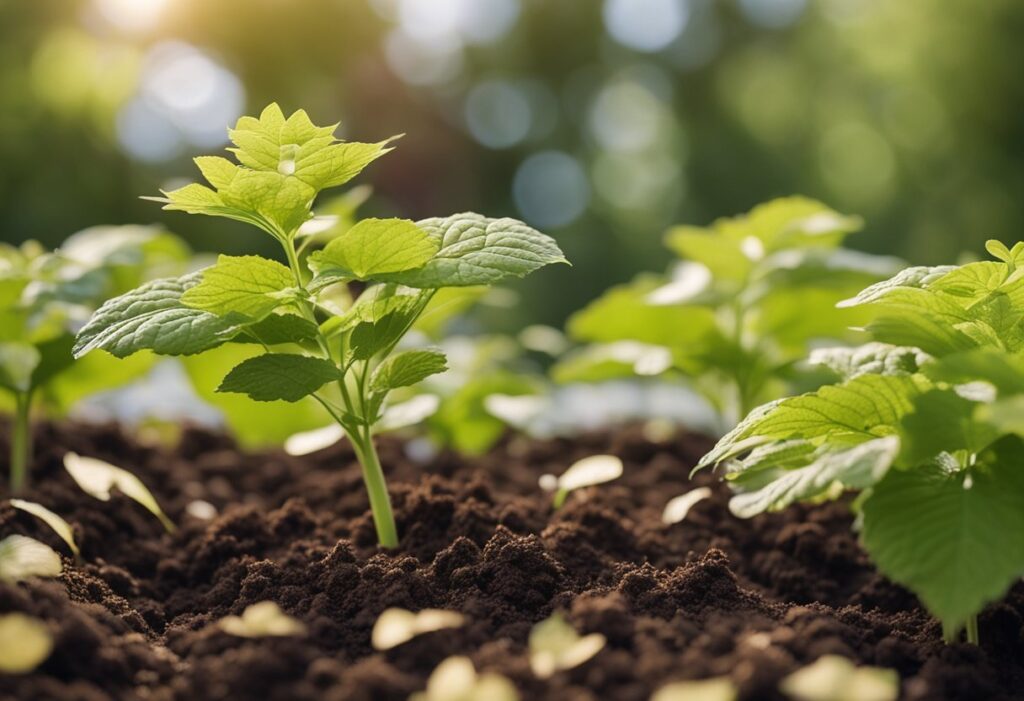
When you want to add ‘Little Honey’ Oakleaf Hydrangea to your garden, understanding the right propagation methods and planting techniques is crucial. For best results, focus on timing seasonal planting to ensure robust growth.
Propagation Methods
Softwood Cuttings:
- Take 3-4 inch cuttings in early summer.
- Keep only one leaf at the top to minimize water loss, and trim any large leaves to one-third their size.
- Dip the cut end in the rooting hormone.
- Plant in a moist rooting medium: sand, sand/peat, or sand/perlite.
Hardwood Cuttings:
- These are typically taken in winter.
Division:
- This method involves separating the root ball into sections, each with several stems and sufficient roots.
Planting Techniques
Soil Requirements:
- Ensure the soil is fertile, moist, and well-drained.
Planting Steps:
- Dig a hole larger than the root ball of your hydrangea.
- Place the plant in the hole at the same depth in the container.
- Backfill the hole and water thoroughly.
Seasonal Planting Tips
Spring:
- Sow seeds in a cold frame as temperatures start to rise.
Summer:
- Early summer is ideal for softwood cuttings.
Winter:
- Winter is the preferred season for hardwood cuttings as the plant is dormant.
Care and Maintenance
Proper care ensures your Little Honey Oakleaf Hydrangea thrives. Focus on timely pruning, proper fertilization, and vigilant pest and disease management to maintain plant health.
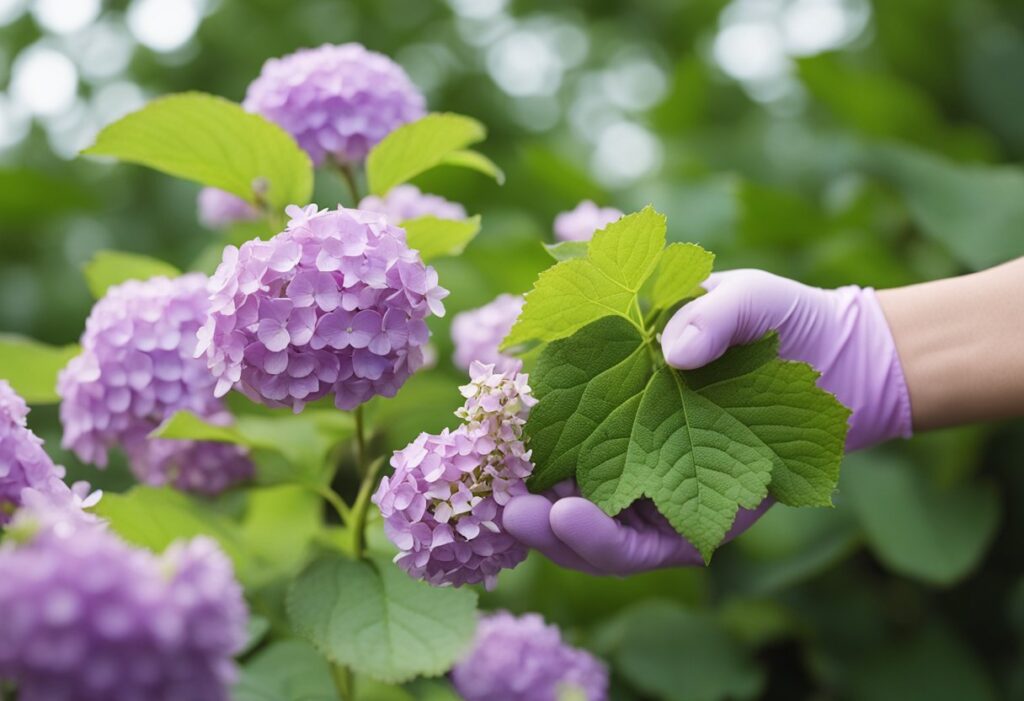
Pruning Guidelines
Prune your Little Honey Oakleaf Hydrangea in late winter or early spring before new growth emerges. Remove only the oldest stems, cutting them back to ground level to encourage vigorous growth. Limit pruning to one-third of the total growth to prevent stress on the plant.
Fertilization Schedule
- Spring: Apply a balanced slow-release fertilizer as new growth appears.
- Summer: Mid-season, assess growth and only add fertilizer if growth appears stunted or foliage color is lackluster.
- Avoid fertilization in late summer to prevent new growth that may not harden off before winter.
Pest and Disease Management
Regularly inspect your hydrangea for signs of pests or disease. Treat leaf-spotting fungi, a common issue, with appropriate fungicides only if severe. Pay attention to proper watering and drainage to minimize such problems, as Oakleaf Hydrangeas are generally robust against pests and diseases.
Landscaping and Design Uses
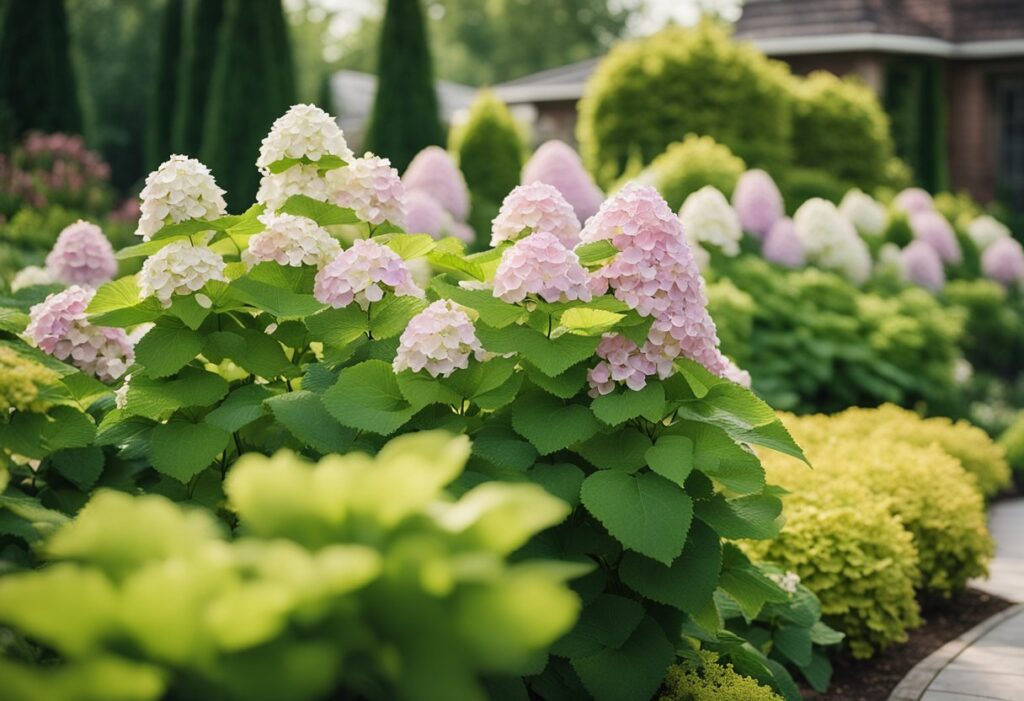
Little Honey Oakleaf Hydrangea (Hydrangea quercifolia ‘Little Honey’) is a versatile focal point in your garden due to its vibrant foliage and elongated blooms. When considering its place in your landscape, utilize symmetry to create formal elegance. For instance:
- Stairway Framing: Plant a Little Honey on either side of the garden steps to create a symmetrical “stairway of blooms,” enhancing the elegance of your accessways.
- Garden Companions: Pair this hydrangea with other shrubs or perennials to enrich the garden tapestry. The brightness of Little Honey stands out against darker foliage or complements pastel blooms.
Regarding its growth and placement:
- Size: Little Honey grows up to 3-4 ft in height and 4-5 ft in width, requiring space to flourish.
- Sunlight: It prospers in full sun to part shade. Optimal results are often achieved in locations with morning sunlight and afternoon shade.
Here is a quick guide table for your reference:
| Planting Condition | Details |
|---|---|
| Sun Exposure | Full sun to part shade – morning sun is ideal. |
| Soil Preference | Fertile, medium moisture, well-drained soil. |
| Spacing | 4-8 feet apart to allow for mature growth. |
| Watering | Regularly to maintain moist soil, especially in full sun. |
Remember to position Little Honey where its year-round appeal, from spring blossoms to fall foliage, can be thoroughly appreciated. Its unique leaf shape and texture also offer visual interest even when the plant is not blooming.
Frequently Asked Questions
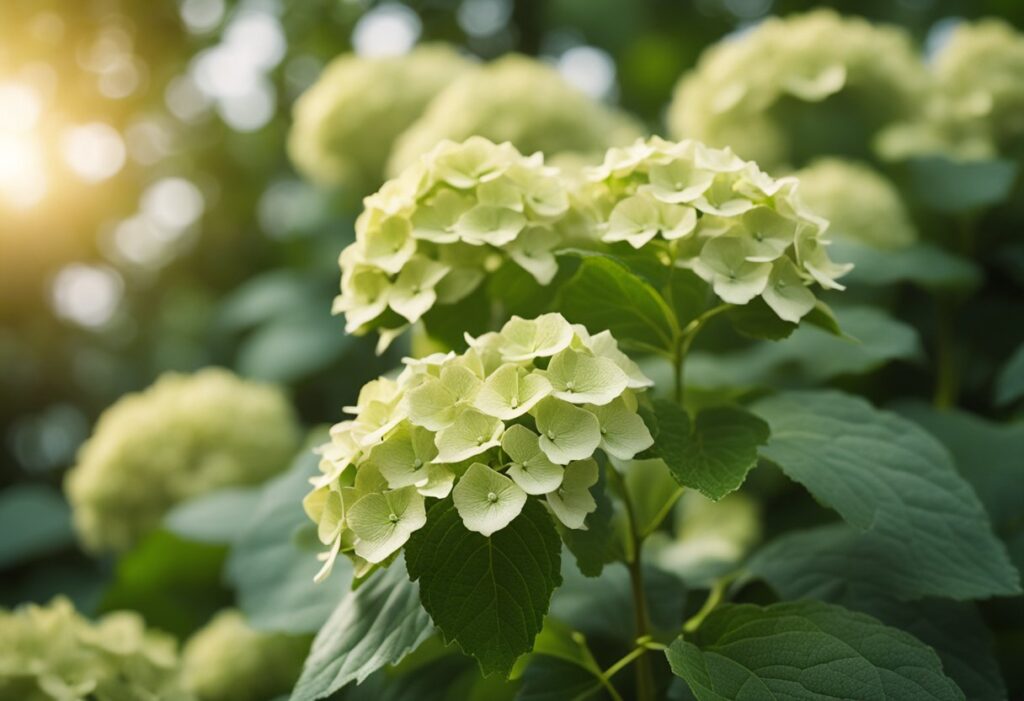
In this section, you’ll find concise answers to common questions about the Little Honey Oakleaf Hydrangea, ensuring you can care for and enjoy this delightful plant to its fullest potential.
What are the care requirements for Oakleaf Hydrangeas?
Your Little Honey Oakleaf Hydrangea thrives in partial shade but can tolerate some sun. It prefers moist, fertile, and well-drained soil. Regular watering and a yearly layer of compost will promote healthy growth and vibrant leaves.
How do you properly prune an Oakleaf Hydrangea?
Prune your Oakleaf Hydrangea minimally since it usually needs little shaping. If pruning is necessary, do it right after flowering to avoid cutting off next season’s buds. Remove only dead or crossed branches to maintain plant health and shape.
What are common problems with Oakleaf Hydrangeas and how can they be treated?
Leaf-spotting fungus may affect your Little Honey Hydrangea, though it is typically not a major issue. If you notice such problems, improve air circulation around the plant and avoid overhead watering to keep the leaves dry.
What is the mature size of a Little Honey Oakleaf Hydrangea?
A Little Honey Oakleaf Hydrangea grows to a height of 3-4 feet (90-120 cm) and spreads 4-5 feet (120-150 cm) wide, making it suitable for smaller gardens.
How does the color of Oakleaf Hydrangeas change throughout the seasons?
The foliage of your Little Honey Oakleaf Hydrangea starts as a striking yellow in spring and retains its color throughout the season. The blossoms may develop pink tinges as autumn approaches, providing a beautiful display.
What are the sunlight and soil preferences for Oakleaf Hydrangeas?
For optimal growth, situate your Oakleaf Hydrangea in a location with full sun to part shade.
It performs best in fertile, medium moisture, well-drained soils. Maintaining the right balance between sunlight and soil conditions will produce a healthier plant.


